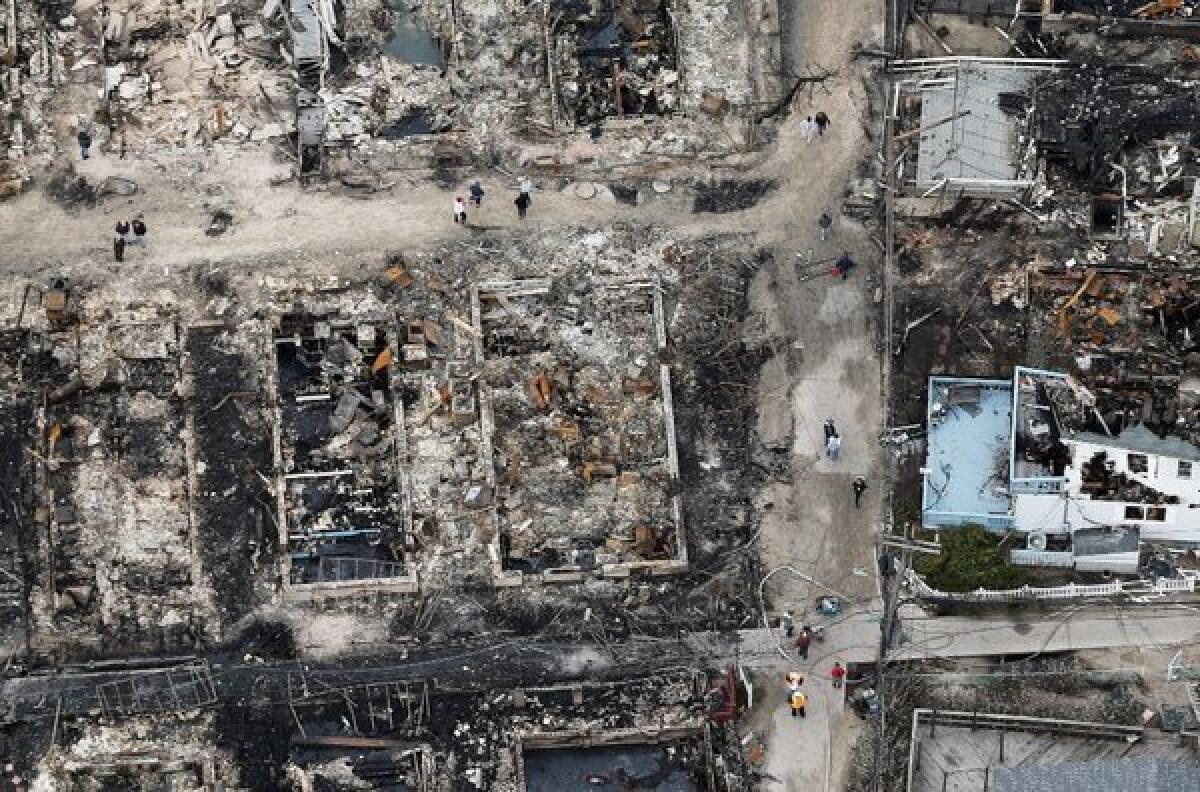How should Washington pay the bill run up by Sandy?

Liberals and their media allies have argued that the political lesson of super storm Sandy is that it shows the value of big government, at least when it’s working properly. They’ve also pounced on GOP presidential candidate Mitt Romney, who said during one of the Republican debates last year that he’d send the Federal Emergency Management Agency’s functions back to the states. (Romney’s campaign said this week that he actually wants to keep FEMA; I’ll leave it to you to decide whether that’s simply a clarification or an event-driven flip-flop.)
A once-in-a-lifetime storm, however, hardly justifies maintaining federal spending at its current level, which is nearly one-fourth of the country’s gross domestic product. True, the example of Sandy offers a compelling argument for sparing FEMA from the budget ax. But it’s entirely possible to have an effective FEMA within a smaller federal government. Doing so simply requires the right priorities and effective leadership.
Still, the latest weather disaster rebuts an argument that Romney’s running mate, Rep. Paul Ryan (R-Wis.), and other congressional Republicans have been making for some time: that any unanticipated spending on disasters should be offset by cuts to other programs.
THEN AND NOW: Devastation from super storm Sandy
The issue comes up seemingly every year, if not more often, because Congress typically puts too little money into FEMA’s disaster relief account. Hoping to end the fights, lawmakers agreed last year to cap disaster funding at roughly the average amount spent annually over the previous 10 years. That translates in the current year to $11 billion. The bill for Sandy’s repairs, however, could be twice that amount, leading to another battle over whether to cover those costs immediately or spread them out over time.
Ideally, Congress would squirrel away enough money to cover the damage unexpectedly inflicted by Mother Nature. But when Washington is running deficits, it has to borrow the money it holds in reserve. Rather than borrowing more than it requires, it’s better fiscal policy to respond to needs when they occur.
Republicans argue that FEMA shouldn’t have a blank check because that would encourage the government to overspend, treating routine events as disasters worthy of federal intervention. They’ve got a point; if people know that Washington will rush to their aid whenever there’s a big fire or flood, they won’t take the steps needed to minimize the risk of loss.
But it’s one thing to try to confine federal intervention to the largest-scale and hardest-to-anticipate emergencies. It’s another to respond to legitimate national disasters such as Sandy by taking a chainsaw to other federal priorities.
The dominant images from the East Coast over the next several weeks will be of bulldozers and dump trucks removing debris. That’s a crucial part of the federal response, but it’s just the short-term aspect. Much of the federal spending in the wake of a natural disaster goes to rebuilding or replacing assets, such as damaged roads, homes and public buildings. Those improvements have long-term benefits, so it makes sense to pay for them over time. That’s particularly true when a disaster cripples a region’s economy and the repairs funded by Washington help restore (or even increase) its productive capacity.
In demanding offsets for extra disaster funds, Republicans often cite the example of how families tighten their belts when they run into unanticipated expenses. But if a family were self-insured and a hurricane blew the roof off its home, it wouldn’t stop buying food for a year to offset the unexpected investment it has to make. That would only exacerbate the damage. The same is true when natural disasters drain FEMA’s reserves, as Sandy seems sure to do.
ALSO:
McManus: Ohio’s deluge of spin
Day of the Dead: Giving death its due
Follow Jon Healey on Twitter @jcahealey
More to Read
A cure for the common opinion
Get thought-provoking perspectives with our weekly newsletter.
You may occasionally receive promotional content from the Los Angeles Times.







